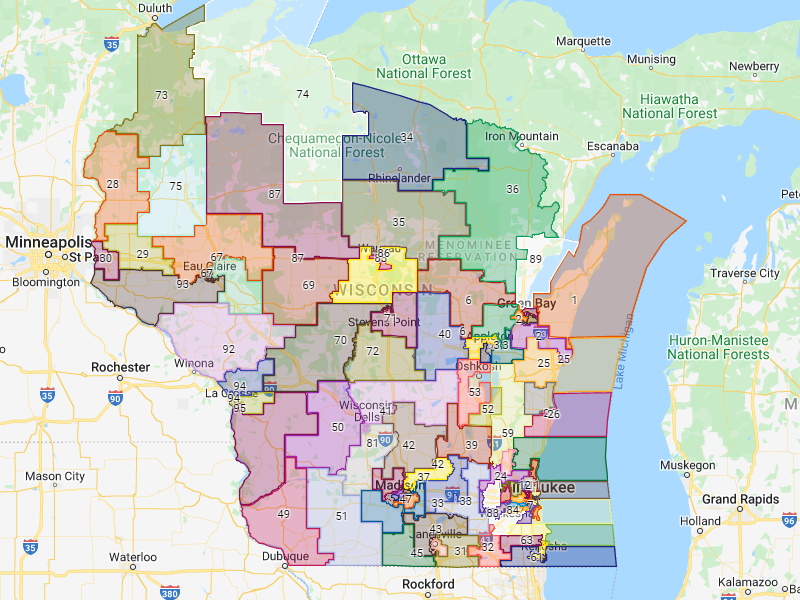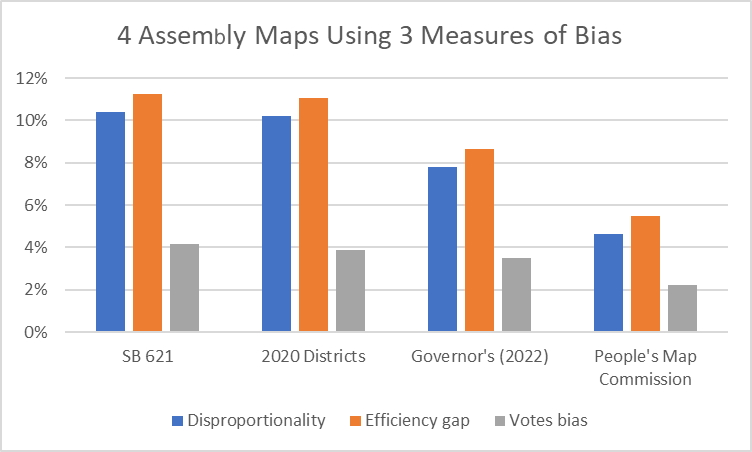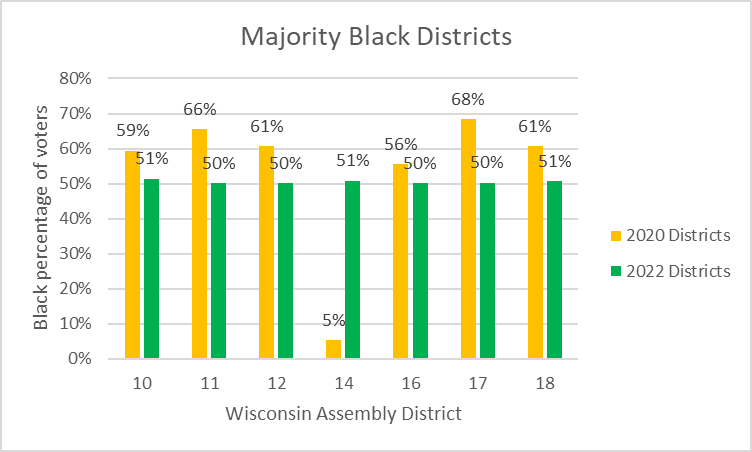State’s Gerrymander Could Last Forever
If state high court’s ‘least change’ rule followed in future, gerrymandering might last for decades.
On November 30th of last year, the Wisconsin Supreme Court issued the first of two decisions on redistricting the Wisconsin’s state Legislature and its Congressional delegation in response to the 2020 Census. The majority opinion, written by Justices Rebecca Bradley, and joined by Justices Annette Ziegler, Patience Roggensack, and Brian Hagedorn, invited parties “to submit congressional and state legislative maps that comply with all relevant legal requirements, and that endeavor to minimize deviation from existing law.”
The court’s decision perpetuates the highly partisan gerrymander created in secret by then-Governor Scott Walker and Republican members of the Legislature in 2010, thereby giving that gerrymander another 10 years of life. It also broke with the past practice of turning to a panel of federal judges to redistrict when Wisconsin’s legislative and executive branches disagree.
Six parties, including Governor Tony Evers and the Republican legislators, submitted proposed maps for state legislator districts. Four of these parties also submitted maps for Congressional districts. (Click here for Marquette Law’s John Johnson’s analysis of the proposals.)
The next chart shows how three metrics rate several proposed Wisconsin maps that were proposed this redistricting cycle. The first, SB-621, is the bill passed by Wisconsin’s Republican Legislature, but vetoed by the governor. All three metrics indicate this bill would have kept and slightly increased the bias in the current gerrymander, shown second in the chart, with an “efficiency gap” of 11 percent.
Third on the chart is the map submitted by Gov. Evers. Even while designed under the “least change” constraint, it is notably less biased than either of the two Republican maps with an efficiency gap of about 9 percent.
On the right, the chart shows the results for the map proposed by the People’s Map Commission. While hardly perfect, it comes far closer to unbiased than the others.
However, in comparing proposed maps, the court’s majority ignored issues of bias, instead rating the maps by the “least-change” metric, based on minimizing the number of people who were moved from one district to another. Using this metric, the plan from Evers fared best.
Republican legislators and groups allied with them immediately appealed the Wisconsin Supreme Court’s decision to the U.S. Supreme Court. But while the players aligned in their opposition to or support for the Wisconsin gerrymander, the grounds for the appeal to the U.S. Supreme Court were quite different.
Under the current map, Wisconsin has six majority Black districts, in which Black voters constitute a range between 56% and 68% of the total voter population. These are shown in yellow in the graph below, along with district 14, which currently is located in Wauwatosa and Brookfield.
As part of his map, Evers proposed to create another, seventh, majority Black district. This would be accomplished by shifting district boundaries. District 14 would be shifted to the east bringing its proportion of Black voters to 50%. Most of District 14’s new voters would come from the six present Black majority districts, lowering their percentage of Black voters to 50% or 51%.
This proposal may or may not be good policy, but it has certainly given the opponents of the Evers map a handle to attack it. It also gave the conservative majority on the U.S. Supreme Court the rationale it needed to justify sending the proposal back to the Wisconsin Supreme Court, citing a supposed need for more analysis on whether the seventh Black majority district would violate the Voting Rights Act of 1968.
Whether the governor’s plan violates, is permitted by, or is required by paragraph 2 of the federal Voting Rights Act is unclear to me from the various briefs that have been submitted. What is clear is that where one stands regarding this controversy is driven far more by where one stands on the Wisconsin gerrymander than one’s views of the Voting Rights Act.
The Wisconsin Supreme Court might be well advised to adopt the governor’s proposed map while giving up on the attempt to create a seventh Black majority district. After all, the court has already established that the Evers plan offers the least amount of change. Without a need to move the boundaries of District 14 and the six current Black majority districts, the rating on the “least-change” should be even better.
More about the Gerrymandering of Legislative Districts
- Without Gerrymander, Democrats Flip 14 Legislative Seats - Jack Kelly, Hallie Claflin and Matthew DeFour - Nov 8th, 2024
- Op Ed: Democrats Optimistic About New Voting Maps - Ruth Conniff - Feb 27th, 2024
- The State of Politics: Parties Seek New Candidates in New Districts - Steven Walters - Feb 26th, 2024
- Rep. Myers Issues Statement Regarding Fair Legislative Maps - State Rep. LaKeshia Myers - Feb 19th, 2024
- Statement on Legislative Maps Being Signed into Law - Wisconsin Assembly Speaker Robin Vos - Feb 19th, 2024
- Pocan Reacts to Newly Signed Wisconsin Legislative Maps - U.S. Rep. Mark Pocan - Feb 19th, 2024
- Evers Signs Legislative Maps Into Law, Ending Court Fight - Rich Kremer - Feb 19th, 2024
- Senator Hesselbein Statement: After More than a Decade of Political Gerrymanders, Fair Maps are Signed into Law in Wisconsin - State Senate Democratic Leader Dianne Hesselbein - Feb 19th, 2024
- Wisconsin Democrats on Enactment of New Legislative Maps - Democratic Party of Wisconsin - Feb 19th, 2024
- Governor Evers Signs New Legislative Maps to Replace Unconstitutional GOP Maps - A Better Wisconsin Together - Feb 19th, 2024
Read more about Gerrymandering of Legislative Districts here
Data Wonk
-
Why Absentee Ballot Drop Boxes Are Now Legal
 Jul 17th, 2024 by Bruce Thompson
Jul 17th, 2024 by Bruce Thompson
-
The Imperial Legislature Is Shot Down
 Jul 10th, 2024 by Bruce Thompson
Jul 10th, 2024 by Bruce Thompson
-
Counting the Lies By Trump
 Jul 3rd, 2024 by Bruce Thompson
Jul 3rd, 2024 by Bruce Thompson
























The change the court doesn’t like is black people getting more representation in the government.